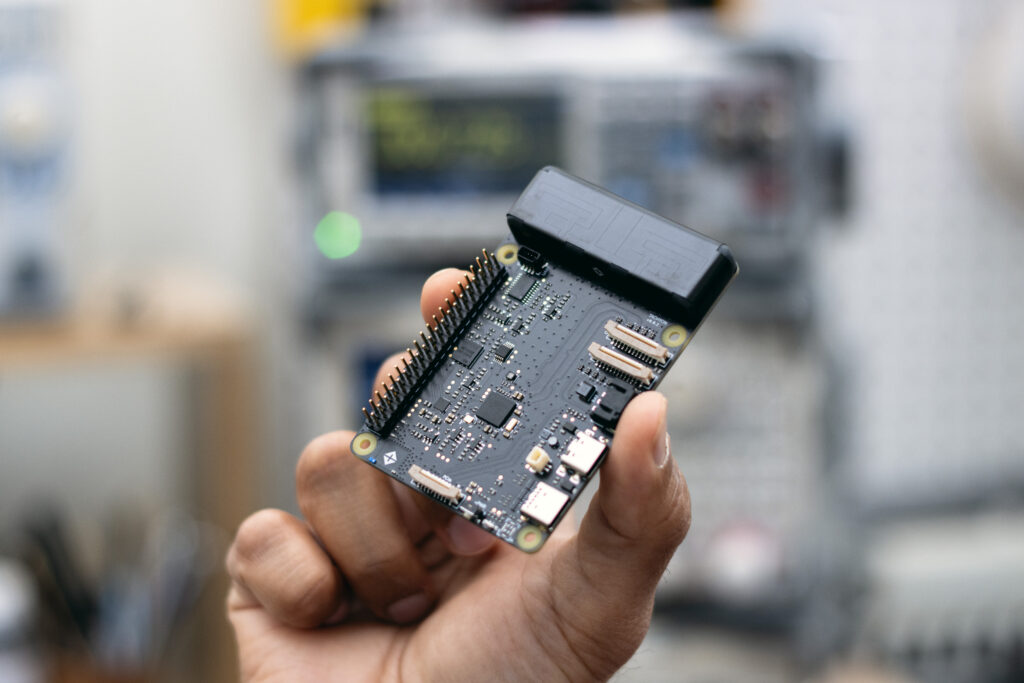
Internet-of-Things Platform-as-a-Service pioneers Particle (or as we OGs call them, “Spark”) have returned to Kickstarter to launch a brand-new campaign, for a brand-new class of product. A far cry from 2013’s 72MHz Spark Core Wi-Fi-enabled microcontroller, the new Particle Tachyon is a 2.7GHz single-board computer (SBC) with 5G connectivity and a whopping 12 TOPS of AI-optimized GPU acceleration.

In a personal briefing with Particle CEO Zach Supalla in April, I was introduced to the new device amid a flurry of impressive numbers and acronyms. But perhaps the most useful tidbit that Zach shared about the Raspberry Pi-compatible 5G AI IoT SBC was the notion of thinking of it more akin to a smartphone. Despite being similar to a Pi in terms of form-factor, the Tachyon eschews many of the built-in accessories found on other SBCs in favor of relying on the USB-C port – including for DisplayPort/HDMI output, which I was particularly excited to hear.

Once you start to think of it as a Nothing One with GPIO running Ubuntu, the story gets really compelling. For starters, there’s less concern about supply chain issues since the same Qualcomm silicon is being used and supported across a spectrum of devices. In addition to all of the fancy specs, like the octa-core CPU and 5G modem with integrated antenna and Wi-Fi 6E, one of the things that really caught my interest was the 64GB of built-in storage, instead of relying on microSD cards. The cost of dongles and adapters and add-ons with some SBCs can really start to add up, so I was intrigued by the fact that I could basically just plug this into the same docking station I use for my Ubuntu-powered laptop and be off and running. But in addition to the Pi-style 40-pin GPIO, the Tachyon also features the same camera connectors as the Pi, making it perfect for machine vision projects. And because it’s Particle, you of course get a top-notch enterprise-grade platform to run it on.

As always, we want to remind you that Kickstarter is not a store, and just because you pledge money doesn’t guarantee that you will receive what was promised, or even anything at all. But Particle have been doing this for over a decade, have a great reputation among both makers and professionals, and already have prototype devices in hand. So it’s pretty easy to recommend that you head on over to Kickstarter while the Super Early Bird pricing is still available, and try to get your hands on Tachyon, the Particle from the future!
ADVERTISEMENT





